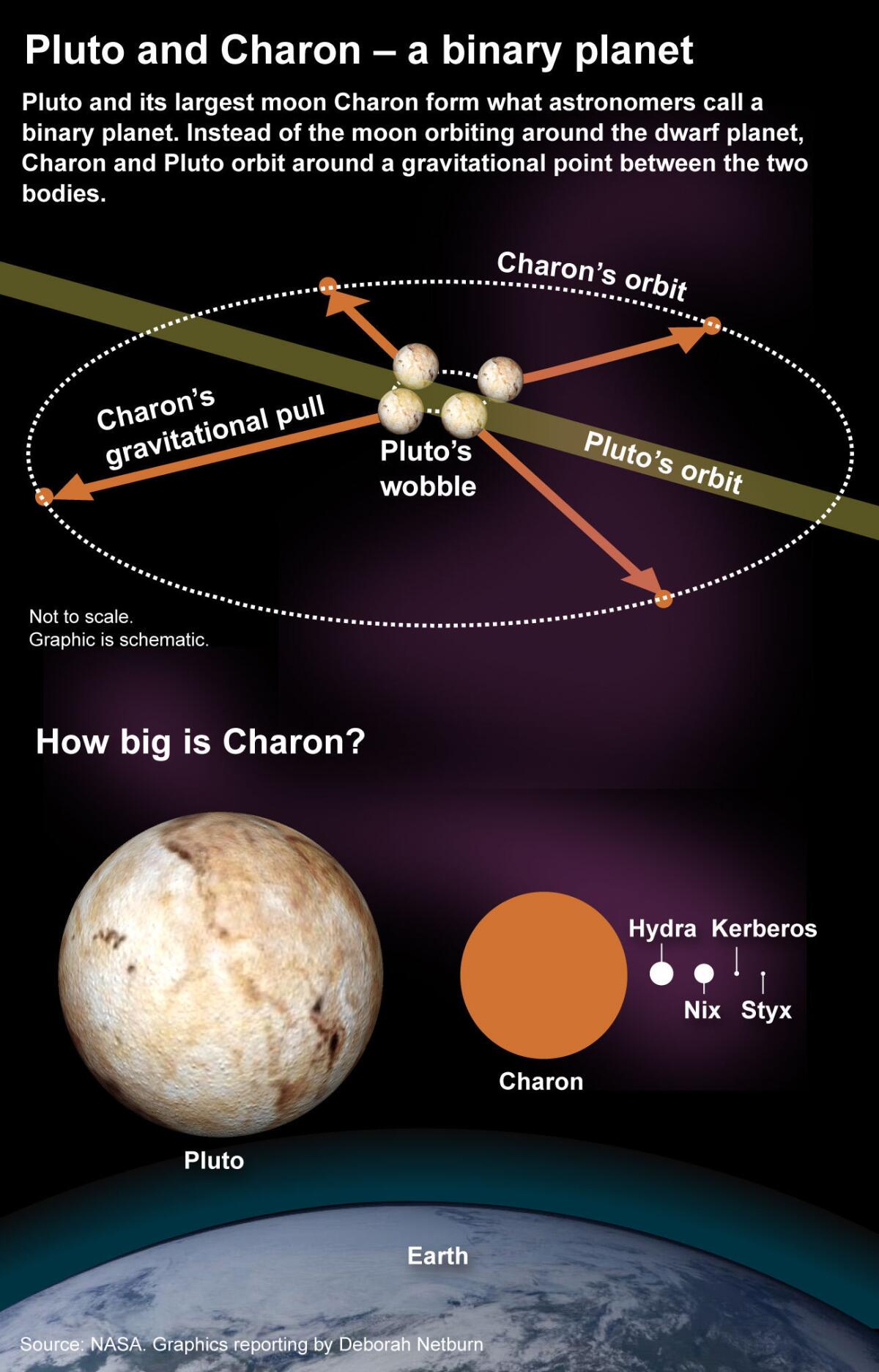Two for the price of one: The unique binary system of Pluto and Charon
- Share via
NASA’s New Horizons is described as a mission to Pluto, but one of the reasons the dwarf planet is so fascinating to scientists is that it’s part of the only known binary system in our solar system.
In a binary system, both members of the pair orbit around a common center of gravity. Earth is about 81 times more massive than the moon, so the moon orbits around us. Pluto, however, is only about 8 1/2 times more massive than Charon. That’s not enough for the dwarf planet to be its moon’s center of attention.
Measurements made by New Horizons reveal that Charon is 750 miles across. That’s slightly more than half of the diameter of Pluto, which is only 1,473 miles across.
But that’s not all. Pluto and Charon are only 12,200 miles apart. For the sake of comparison, our moon is 238,900 miles away from Earth.

Scientists believe the close relationship between Pluto and Charon is no coincidence. In all likelihood, the two were part of the same body until it collided with another object in the solar system’s early days. Much of the material knocked loose by the collision probably coalesced to form Charon. (Our moon was probably formed in much the same way.)
However, data collected by the New Horizons team show significant differences between the dwarf planet and its largest moon. Pluto has a rocky interior and a significant atmosphere. Charon has no atmosphere and contains about as much ice as rock. Scientists have detected nitrogen, methane and carbon monoxide ices on Pluto, while most of Charon’s ice is made of water and ammonia.
“These two objects have been together for billions of years, in the same orbit, but they are totally different,” Alan Stern, principal investigator for the New Horizons mission, said in a statement.
Pluto has four other moons — Hydra, Nix, Kerberos and Styx — and they’re all much smaller than Charon. But they don’t orbit Pluto either. Instead, they orbit the combined center of gravity of Pluto and Charon. A study published in June in the journal Nature described the chaotic situation.
“If you stood on Nix, the sun might rise in the west and set in the east one day, and rise in the east and set in the north on another,” study coauthor Mark Showalter of the SETI Institute in Mountain View, Calif., said at the time. “And if you bought real estate in the north pole, you might discover one day that you are now in the south pole.”
MORE
Pluto is now the most distant object ever visited by humanity
VIDEO: Our Solar System Visualized
INFOGRAPHIC: New Horizons' path to Pluto
PHOTOS: Getting ready for Pluto's close-up
Follow me on Twitter @LATkarenkaplan and "like" Los Angeles Times Science & Health on Facebook.




